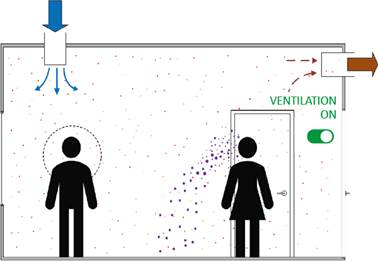Introduction Most builders only focus on windows, roofs, and other openings to prevent water from getting into the home. But

The COVID-19 pandemic has disrupted the world in unprecedented ways, affecting every aspect of life and business. The engineering and construction industry is no exception, as it faces challenges such as supply chain shortages, production halts, project delays, and reduced demand. However, the crisis also presents an opportunity for the industry to rethink its practices and prepare for a more resilient and sustainable future.
One of the key areas that requires attention and innovation is MEP design and engineering. MEP stands for mechanical, electrical, and plumbing, and it refers to the systems and services that provide comfort, safety, and functionality to buildings. MEP design and engineering involves planning, designing, installing, operating, and maintaining these systems in accordance with the project requirements, standards, codes, and regulations.

MEP design and engineering plays a vital role in ensuring the quality and performance of buildings, especially in the post-COVID era, where health and hygiene are paramount. In this article, we will explore some of the trends and technologies that are shaping the future of MEP design and engineering in response to the pandemic and beyond.
The COVID-19 crisis has highlighted the need for reducing greenhouse gas emissions and mitigating climate change. According to the International Energy Agency (IEA), global energy demand declined by 3.8% in the first quarter of 2020 due to the lockdown measures imposed by governments to contain the virus1. However, this is not enough to achieve the long-term goals of the Paris Agreement, which aims to limit the global temperature rise to well below 2°C above pre-industrial levels2.
Therefore, MEP design and engineering must focus on improving the energy efficiency and sustainability of buildings, which account for about 40% of global energy consumption and 36% of CO2 emissions3. This can be achieved by using renewable energy sources such as solar, wind, geothermal, or biomass; implementing smart metering and monitoring systems; optimizing HVAC (heating, ventilation, and air conditioning) systems; integrating passive design strategies such as natural lighting, ventilation, shading, or insulation; and applying green building certifications such as LEED (Leadership in Energy and Environmental Design) or BREEAM (Building Research Establishment Environmental Assessment Method).
The COVID-19 crisis has also emphasized the importance of health and safety in buildings, especially in terms of indoor air quality (IAQ) and infection control. According to the World Health Organization (WHO), poor IAQ can cause or aggravate respiratory diseases such as asthma, allergies, or pneumonia4. Moreover, airborne transmission of COVID-19 is possible through aerosols or droplets that can remain suspended in the air for long periods of time.
Therefore, MEP design and engineering must ensure that buildings provide adequate ventilation, filtration, humidification, dehumidification, disinfection, and purification of indoor air to prevent or reduce the spread of pathogens. This can be achieved by using high-efficiency particulate air (HEPA) filters; ultraviolet germicidal irradiation (UVGI) lamps; bipolar ionization devices; photocatalytic oxidation (PCO) systems; or natural ventilation methods such as operable windows or vents. Additionally, MEP design and engineering must comply with the guidelines and recommendations issued by authorities such as WHO, ASHRAE (American Society of Heating, Refrigerating and Air-Conditioning Engineers), or CDC (Centers for Disease Control and Prevention) regarding IAQ and infection control.
The COVID-19 crisis has also accelerated the digital transformation of the engineering and construction industry. Digitalization and automation can enhance the efficiency, productivity, quality, safety, and profitability of MEP design and engineering processes. Some of the digital tools and technologies that are being adopted or developed by MEP design and engineering companies include:
The COVID-19 crisis has also stimulated the innovation and collaboration of the engineering and construction industry. Innovation and collaboration are essential for finding new solutions and creating value for customers and stakeholders. Some of the ways that MEP design and engineering companies can foster innovation and collaboration include:
Conclusion
The COVID-19 pandemic has posed significant challenges to the engineering and construction industry, but it has also opened new opportunities for improvement and growth. MEP design and engineering is a key component of the industry that can contribute to the recovery and resilience of buildings in the post-COVID era. By embracing the trends and technologies discussed in this article, MEP design and engineering companies can create value for their customers and stakeholders, as well as for themselves.
About Author
InnoDez